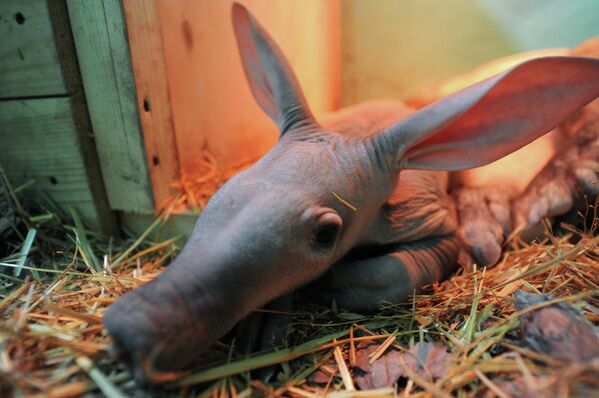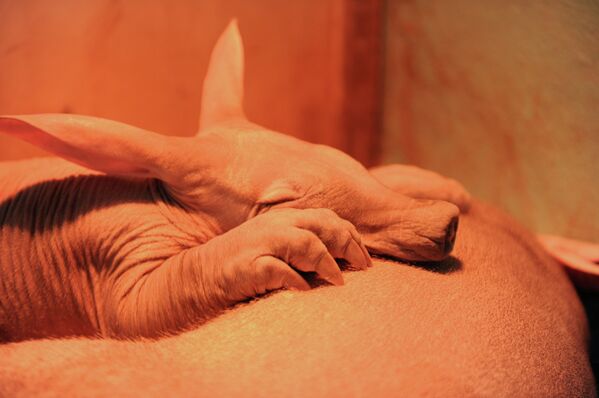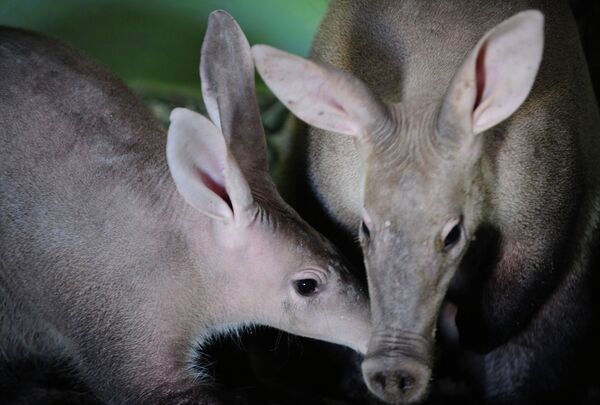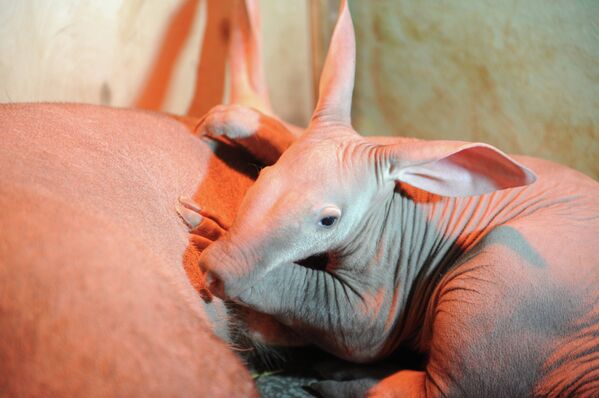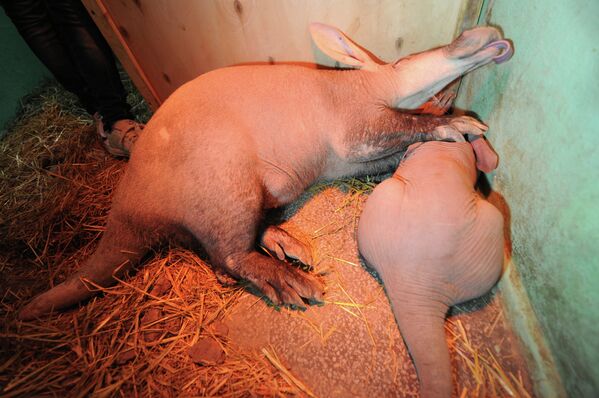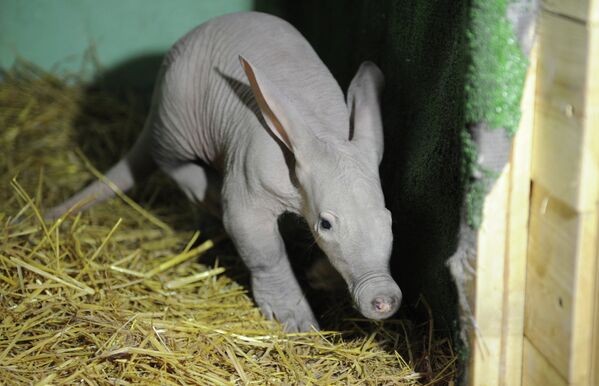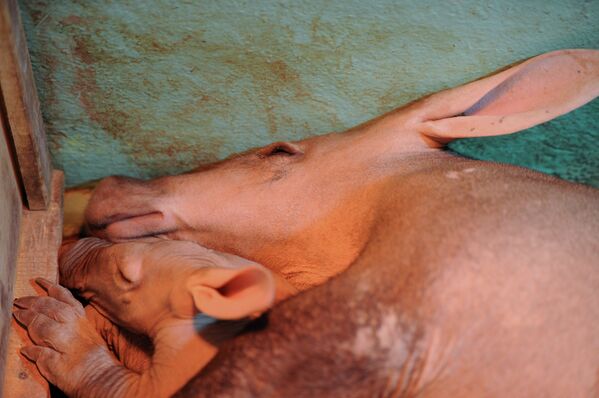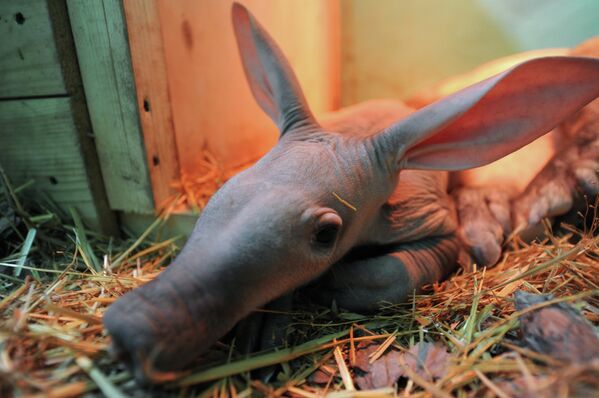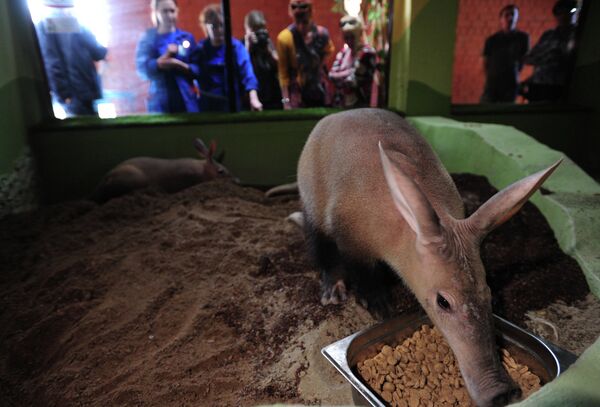https://sputnikglobe.com/20130405/First-Aardvark-Born-in-Russian-Zoo-180459533.html
First Aardvark Born in Russian Zoo
First Aardvark Born in Russian Zoo
Sputnik International
The zoo in the Urals city of Yekaterinburg has welcomed a new resident, a baby aardvark, born in February. 05.04.2013, Sputnik International
2013-04-05T07:57+0000
2013-04-05T07:57+0000
2013-04-05T07:57+0000
https://cdn1.img.sputnikglobe.com/img/18045/93/180459345_0:0:0:0_1920x0_80_0_0_90172368058199f7980d4047d61296a0.jpg
Sputnik International
feedback@sputniknews.com
+74956456601
MIA „Rosiya Segodnya“
2013
Sputnik International
feedback@sputniknews.com
+74956456601
MIA „Rosiya Segodnya“
News
en_EN
Sputnik International
feedback@sputniknews.com
+74956456601
MIA „Rosiya Segodnya“
Sputnik International
feedback@sputniknews.com
+74956456601
MIA „Rosiya Segodnya“
photo
First Aardvark Born in Russian Zoo The zoo in the Urals city of Yekaterinburg has welcomed a new resident, a baby aardvark, born in February.
The zoo in the Urals city of Yekaterinburg has welcomed a new resident, a baby aardvark, born in February.
© RIA Novosti . Pavel Lisitsyn / Go to the mediabank The zoo in the Urals city of Yekaterinburg has welcomed a new resident, a baby aardvark, born in February. The zoo in the Urals city of Yekaterinburg has welcomed a new resident, a baby aardvark, born in February.
© RIA Novosti . Pavel Lisitsyn / Go to the mediabank This is the first aardvark to be born in Russia,” the zoo said on its website. This is the first aardvark to be born in Russia,” the zoo said on its website.
© RIA Novosti . Pavel Lisitsyn / Go to the mediabank A couple of aardvarks were brought to Yekaterinburg from Tanzania last spring. A couple of aardvarks were brought to Yekaterinburg from Tanzania last spring.
© RIA Novosti . Pavel Lisitsyn / Go to the mediabank Aardvarks have the body of an anteater, the ears of a rabbit, the snout of a pig and the tail of a kangaroo. Aardvarks have the body of an anteater, the ears of a rabbit, the snout of a pig and the tail of a kangaroo.
© RIA Novosti . Pavel Lisitsyn / Go to the mediabank Their bodies are 100 to 150 centimeters (40-60 inches) long. They stand up to 65 centimeters tall at the shoulder and weigh up to 80 kilograms (176 lbs). Their bodies are 100 to 150 centimeters (40-60 inches) long. They stand up to 65 centimeters tall at the shoulder and weigh up to 80 kilograms (176 lbs).
© RIA Novosti . Pavel Lisitsyn / Go to the mediabank The little-studied aardvark, which means “ground pig” in Afrikaans, is the only representative of the order Tubulidentata. The little-studied aardvark, which means “ground pig” in Afrikaans, is the only representative of the order Tubulidentata.
© RIA Novosti . Pavel Lisitsyn / Go to the mediabank The aardvark owes its name to its unique tooth structure. In fact, its teeth are clusters of vasodentin tubes without enamel or roots. The aardvark owes its name to its unique tooth structure. In fact, its teeth are clusters of vasodentin tubes without enamel or roots.
© RIA Novosti . Pavel Lisitsyn / Go to the mediabank In total, only about 90 aardvarks live in zoos worldwide. In total, only about 90 aardvarks live in zoos worldwide.
© RIA Novosti . Pavel Lisitsyn / Go to the mediabank Ten aardvarks were born in captivity over the past 50 years. Ten aardvarks were born in captivity over the past 50 years.
